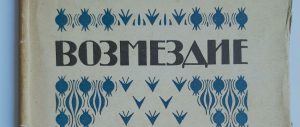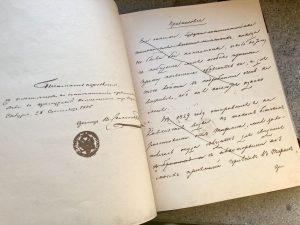Our Notes & References
Pasternak’s poetic manifesto, his third book and possibly his most famous poetry, here in the first edition with Annenkov’s famous portrait, the second overall following the first by the same publisher the previous year. ‘This important poetic cycle circulated widely before its publication in 1922 and earned Pasternak acclaim as a major modern poet’ (Terras). The poems were inspired by Pasternak’s love for Elena Vinograd, intensified by his revolutionary fervor in the summer of 1917.
The collection had a profound impact on many of his contemporaries, including Mandelshtam and Tsvetaeva. “Mayakovsky read with incredible enthusiasm, from the first page to the last, the whole “My Sister Life”. This made a completely stunning impression” (Iakobson). “My Sister Life is revolutionary in the best sense of this word” (Pasternak to Briusov, 15 August 1922). “My Sister Life”! – My first reaction, having endured it all: from the first blow to the last – arms wide open: so that all joints cracked. I fell under this book like under a torrential rain” (Tsvetaeva).
Bibliography
Lesman 1717; Roman Iakobson, “Budetlianin nauki: vospominianii, pisma, stati, stikhi, proza”, pp. 73–74; Rozanov 3581; Tsvetaeva, “Svetovoi liven”, in Epopeia, 1922, December, no. 3, p.13.
Physical Description
Octavo (19.5 x 13 cm). Frontispiece portrait of Pasternak by Iurii Annenkov, 115 pp. including leaf with publisher’s device, title, dedication leaf and epigraph leaf.
Binding
Uncut in original publisher’s wrappers with publisher’s title label to upper cover.
Condition
Title and dedication leaf unopened, wrappers a bit faded especially spine, this rubbed and splitting at head and foot with minimal loss; a couple of leaves loose and another couple frayed, occasional minimal staining or soiling.










